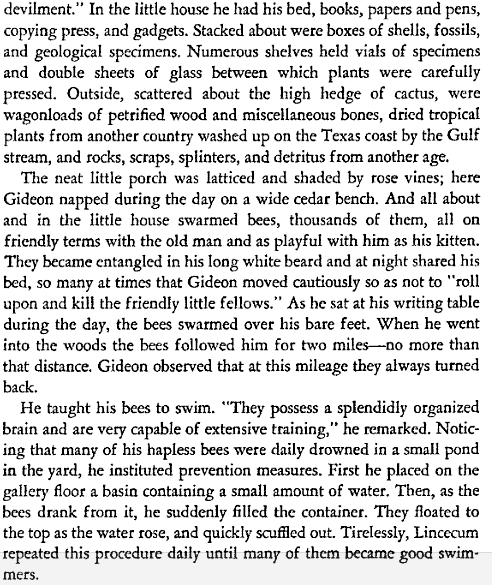In 1848, after years of practicing medicine with herbal remedies learned from Indians and trading with the Indians on the Tombigbee, he moved to Texas. He purchased 1,828 acres of the fertile prairie land he had seen on his Texas visit thirteen years before. Lincecum, Sarah, and their surviving ten children, a number of grandchildren, and ten slaves arrived in Long Point on his fifty-fifth birthday.
In Texas Lincecum continued to practice medicine, made geological explorations, assembled a plant collection including 500 species with medicinal properties, kept a meteorological journal that charted drought cycles, and observed and recorded the daily activities of insect life. He became recognized as an astute naturalist, corresponded with internationally known scientists, and contributed valuable collections to the Philadelphia Academy of Science and the Smithsonian Institution. He was elected a corresponding member of the Philadelphia Academy, a rare honor for an amateur. His writings appeared in such national publications as the American Naturalist, the American Sportsman, and the Proceedings of the Academy of Natural Sciences, and his views on a variety of subjects, including politics, appeared in the Texas Almanac and in newspapers. Charles Darwin sponsored the publication of Lincecum’s controversial paper on the agricultural ant in the Journal of the Linnaean Society of London in 1862.
(via the Handbok of Texas Online)
PS: he was also into eugenics, an ardent campaigner for castration of criminals and “mental misfits.”
An excerpt from his biography:
from Gideon Lincecum, 1793-1874: a biography
By Lois Wood Burkhalter

